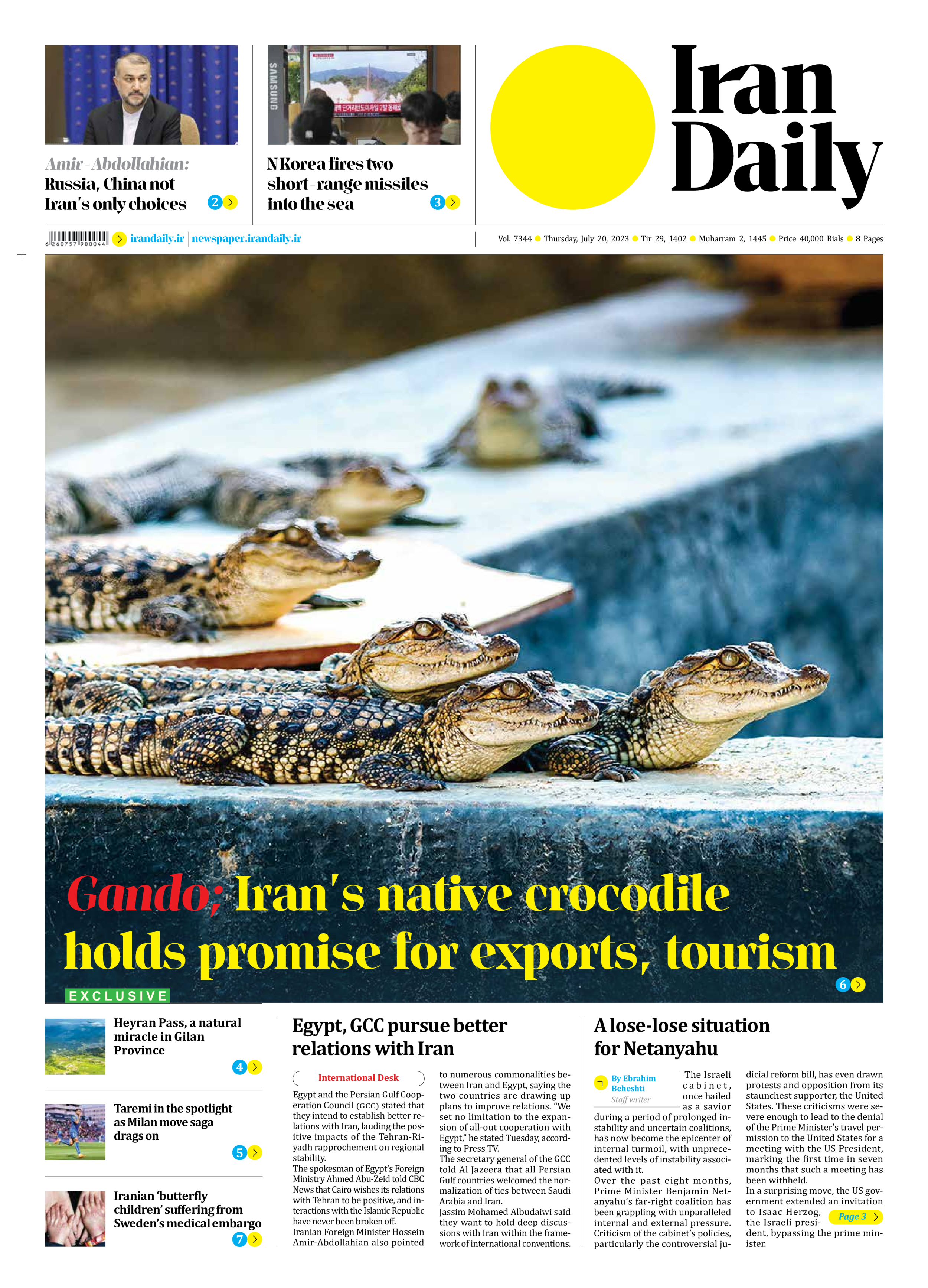
Gando; Iran’s native crocodile holds promise for exports, tourism
By Sadeq Dehqan
Staff writer
The mugger crocodile, scientifically known as crocodylus palustris and referred to as gando in the local dialect of Sistan and Baluchestan, holds a distinct position in Iran’s wildlife scene. As the sole crocodile species native to freshwater habitats in the country, it occupies a unique ecological niche.
Within Iran’s southeastern province of Sistan and Baluchestan, the mugger crocodile reigns as a medium-sized reptile, taking the crown as the largest reptile within the nation. Its presence is particularly prominent in the Chabahar port city and various parts of the province, presenting opportunities for economic development and tourism.
The species’ origins can be traced back to the Sarbaz River in Iran, sharing its range with India and Bangladesh. While a precise census on the number of gando in Sistan and Baluchestan remains unavailable, the population is considered substantial, not only in the province but also across neighboring countries. At present, the species is not classified as endangered due to its abundance.
The crocodile type is characterized by its relatively smaller size and short snout. In comparison to its South American counterparts, which can reach astonishing lengths of 6 to 8 meters, and sometimes even up to 12 meters, the gando’s length rarely exceeds 4 or 5 meters.
The mugger crocodile has earned a reputation for its shy and non-aggressive demeanor, except during the egg-laying season when it becomes fiercely protective. It maintains a safe distance from humans and other animals, avoiding unnecessary interactions whenever possible.
In recent years, Sistan and Baluchestan province has experienced a surge in drought, as noted by Farhad Saleh-Zahi, an environmental expert in the Chabahar Free Zone. Despite warnings against approaching the Sarbaz River, certain villagers acting as water harvesters have risked venturing near it. Tragically, this has led to reports of gando attacks on locals in the region.
While gando’s primary diet consists of birds, fish, and small mammals, observations have revealed that these crocodiles may also target cattle, driven by the scarcity of food as they approach the Sarbaz River to quench their thirst.
Gando breeding
Saleh-Zahi brings attention to the breeding of gando, highlighting the existence of a sole breeding center spanning an area of about 5,000 square meters in the Chabahar Free Zone, Sistan and Baluchestan Province. Established in 2018, this breeding farm obtained a pair of gando from the environment and has since obtained a population of 120 specimens. With the ongoing egg-laying season, an upsurge in the gando population at the center is anticipated.
The gando at the center ranges in age from four to five months, with a potential lifespan of up to 40 years. The oldest members of the center are the original progenitor pair. In their natural habitats, gando typically have shorter lifespans, but under favorable breeding conditions, they can live up to 60 years or more.
As for the objectives of the gando breeding center, Saleh-Zahi emphasizes that a primary goal is to reintroduce gando crocodiles into their natural habitats. Additionally, some of the gando raised at the center are intended for export to Southeast Asian countries. However, the production capacity of the center has not yet met the required level for exportation. In 2020, some gando specimens were released from the center into the wild to support their reproduction in their natural environment.
Gando demand in Southeast Asia
The uses of gando in Southeast Asian countries are diverse, as described by Saleh-Zahi. Some of these crocodiles are acquired for display in wildlife parks, or to be released into crocodile habitats. Moreover, the valuable skin of the gando is utilized in producing high-end leather goods, while its meat is also consumed in Southeast Asian countries.
The significance of crocodile blood in the serum and pharmaceutical industries cannot be overlooked, and the antibodies produced in the gando’s body contribute to manufacturing sensitive drugs, including those used in AIDS treatment, the environmentalist says.
Saleh-Zahi points out the potential income generation of the gando breeding industry in Sistan and Baluchestan province.
“If gando production reaches the desired level across various centers in the province, it could pave the way for its export, thus contributing to the economic growth of both the province and the entire country.”
Furthermore, Saleh-Zahi emphasizes the tourism potential of gando in the region. Sistan and Baluchestan province stands out as the only region in Iran where crocodiles are found natively.
“With strategic investments in the tourism sector, providing essential facilities and equipment, the region could attract tourists interested in witnessing the natural habitats and conservation centers dedicated to this unique animal,” he says.
The global popularity of gando makes it a compelling attraction, promising significant opportunities for income generation and employment creation in the region.







